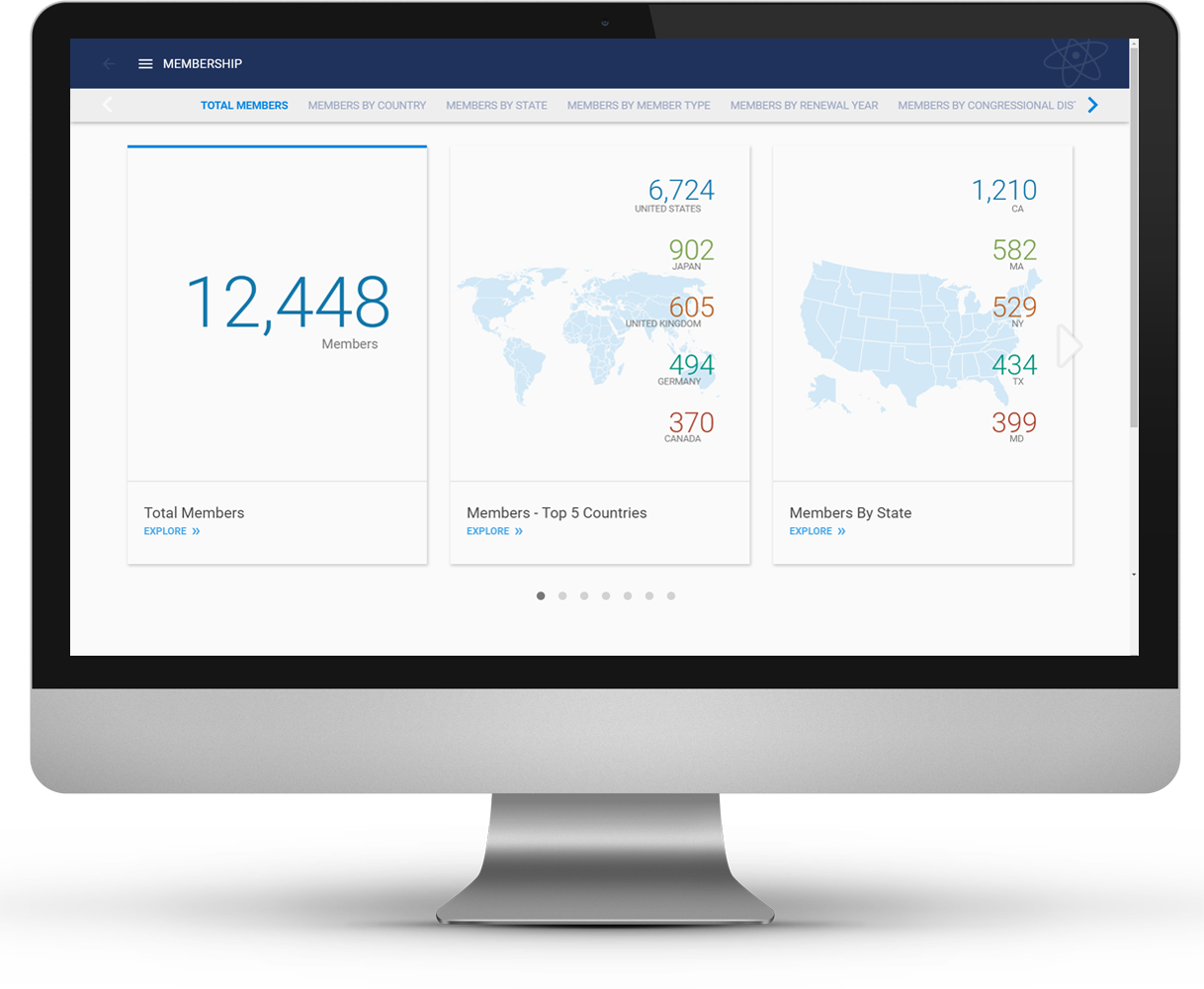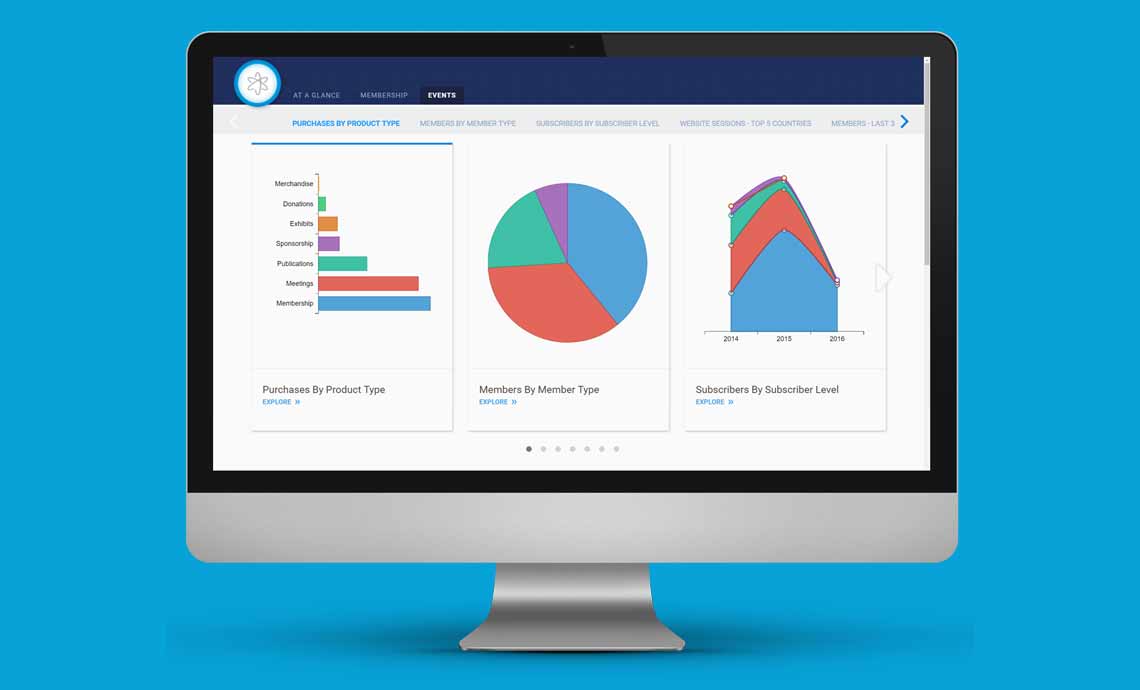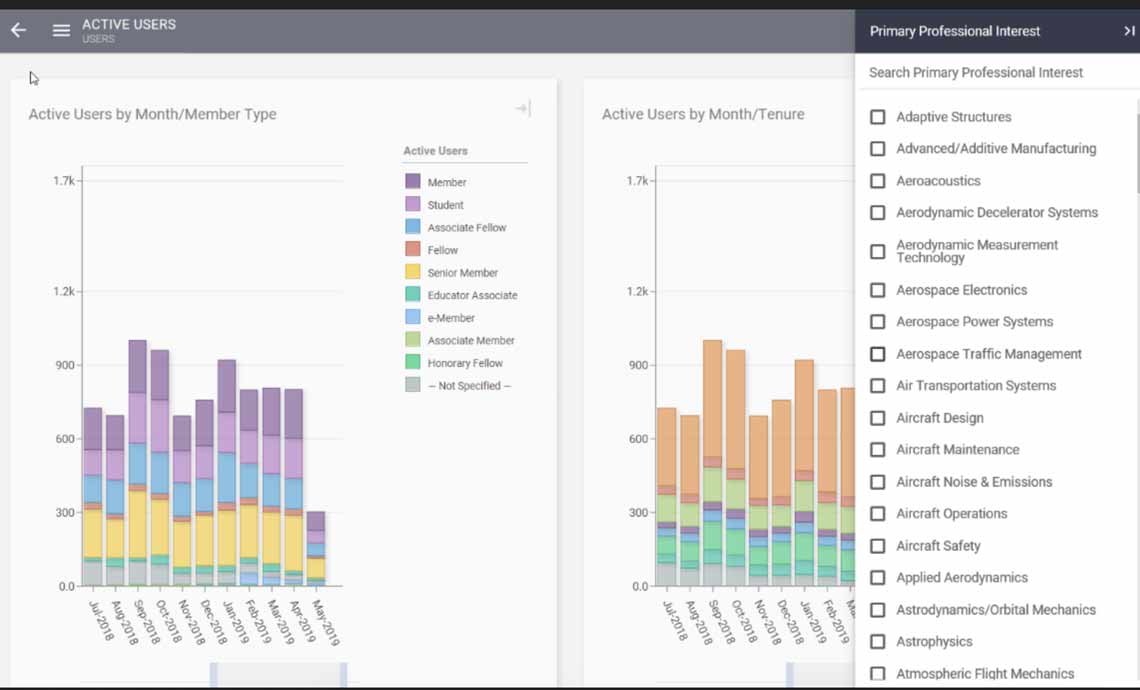We are all juggling strategic initiatives – those set by the board or executive team – along with tactical improvements needed to move the needle for the organization. Maybe a new website has been authorized to update a clunky CMS, or implement a new CRM. These are worthy and important initiatives. But without implementing the right data analytics tools, all this energy may be spent in keeping the needle exactly where it is for your organization.
Below are four key reasons why data analytics should rise to the top of your priority list:
#1) Data analytics can save you money almost immediately. Most organizations invest heavily on integrations to attempt to cluster data into a CRM or AMS. Implementing a best-of-breed data analytics solution empowers those organizations to mine the data to gain valuable insights, instead of managing the integrations.
- Gartner predicts that by 2018, organizations with data virtualization capabilities will spend 40% less on building and managing data integration processes for connecting distributed data assets.
This approach liberates organizations from making and managing complex integrations, and enables them to focus on the ultimate goal – processing and understanding the data to make better decisions.
#2) Data analytics will make you money almost immediately. Would you like to know why your renewals are decreasing? Segment and visualize them, identify common traits of those members which haven’t renewed, then create targeted campaigns to reignite their interest. Would you like to know who attended your conference last year but has not yet registered this year? Getting ahead of attendance issues is easier than ever: evaluate who attended which sessions, then revise and send targeted messaging to garner those critical attendees. But performing these types of diagnoses without the right tools is like operating without light – you’d be guessing.
- Computer Week identified that “BI enables a closer approach to the fabled ’golden copy’ of data, aimed at ensuring that anyone looking to do data analysis within an organization is looking at the same information….In many organizations, there is a direct connection between the business and BI software.”
Starting off doesn’t have to be expensive or time-consuming. Begin with your KPIs, build out visualizations and analysis that help you track and achieve your goals, then expand from there.
 #3) Data analytics gets the data to the people.Your staff contributes to the bottom line every day. They each have valuable perspectives and unique orientations that can benefit from access to visualizations and analytics. Throttling data and limiting it to your more technical resources limits the ability for other staff or departments to act quickly to changing business needs.
#3) Data analytics gets the data to the people.Your staff contributes to the bottom line every day. They each have valuable perspectives and unique orientations that can benefit from access to visualizations and analytics. Throttling data and limiting it to your more technical resources limits the ability for other staff or departments to act quickly to changing business needs.
- A Dresner Advisory Services Study cited by Forbes revealed that Cloud BI adoption is soaring in 2018, nearly doubling 2016 adoption levels.
This means that staff are relying more on integrated cloud-based analytics systems more than ever to visualize and proactively solve their problems. Each department is empowered to see and use their data. The model is rapidly moving away from the service-bureau model of IT providing ad-hoc reports.
 #4) Objects in mirror are closer than they appear. Your competitors are leveraging data to attract eyeballs, and your constituents have options.
#4) Objects in mirror are closer than they appear. Your competitors are leveraging data to attract eyeballs, and your constituents have options.
Remaining relevant by being the go-to resource for members is the key to sustaining the business for years to come.
Data analytics is fuel-injection for determining where, how and why members visit and consume your content. Using BI to refine your content, membership offerings, even event sessions – before the opportunities have passed – increases the likelihood that members will stay engaged which increases the organization’s viability.
Associations are leveraging new data analytics and marketing efforts to attract and retain younger members. Those same members are conditioned to search Google and ask their peers for answers before they turn to professional organizations. Use data analytics to test what works best, keep constituents engaged, increase the likelihood that they attend events and webinars and assign the value to your organization.
Yes, a new website or CRM are important tools in ensuring the organization is viable long-term. But realizing why constituents hit the website, what they want when they get there and how to keep them engaged … that is priority #1.


